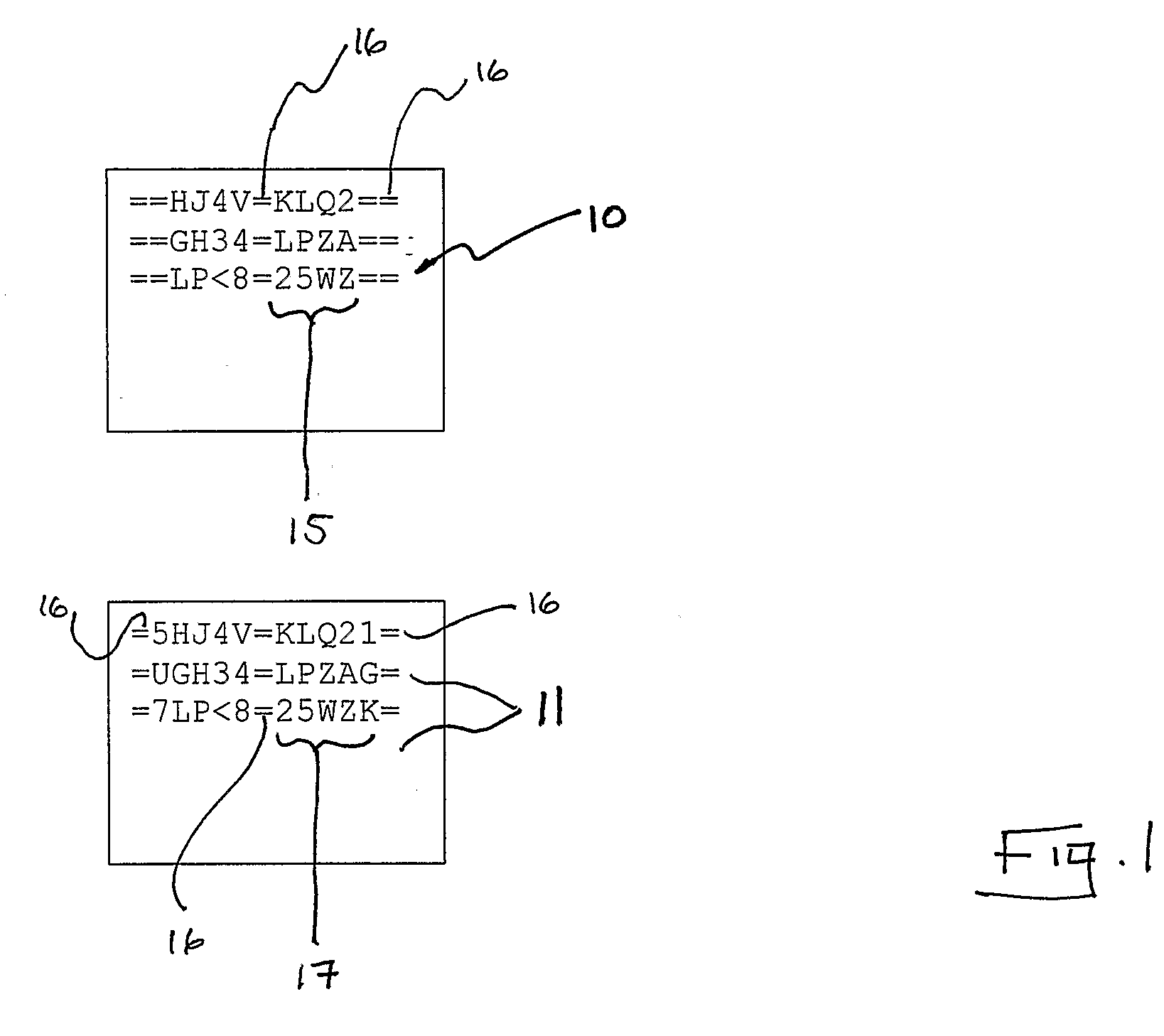Encoding and Decoding Alphanumeric Data
- Summary
- Abstract
- Description
- Claims
- Application Information
AI Technical Summary
Benefits of technology
Problems solved by technology
Method used
Image
Examples
Embodiment Construction
[0021]As shown in FIG. 1, there is provided a method of encoding information or “initial data” that is otherwise stored in e.g. paper barcodes and magnetic stripes on tickets, cards and passes, into a portable alphanumeric string geometry 10 (“N-Code”). Such an alphanumeric string is easily transmitted wirelessly to all messaging-supporting mobile devices whereupon it may be optically scanned and reliably decoded back to the original encoded information, for purposes such as admission, identification of person, identification of a consumer profile, etc. In one example of FIG. 1, nine to fifteen digits of information are transmitted as a message that results in 3 lines of text 10. Each line has two sets 15 of four or five alphanumeric characters, each line bounded by a special marker character 16. The sets are separated by the same special marker characters 16, here the symbol “=”. In another example of FIG. 1, 16 to 18 digits of information are transmitted as a message that results ...
PUM
 Login to View More
Login to View More Abstract
Description
Claims
Application Information
 Login to View More
Login to View More - R&D
- Intellectual Property
- Life Sciences
- Materials
- Tech Scout
- Unparalleled Data Quality
- Higher Quality Content
- 60% Fewer Hallucinations
Browse by: Latest US Patents, China's latest patents, Technical Efficacy Thesaurus, Application Domain, Technology Topic, Popular Technical Reports.
© 2025 PatSnap. All rights reserved.Legal|Privacy policy|Modern Slavery Act Transparency Statement|Sitemap|About US| Contact US: help@patsnap.com



